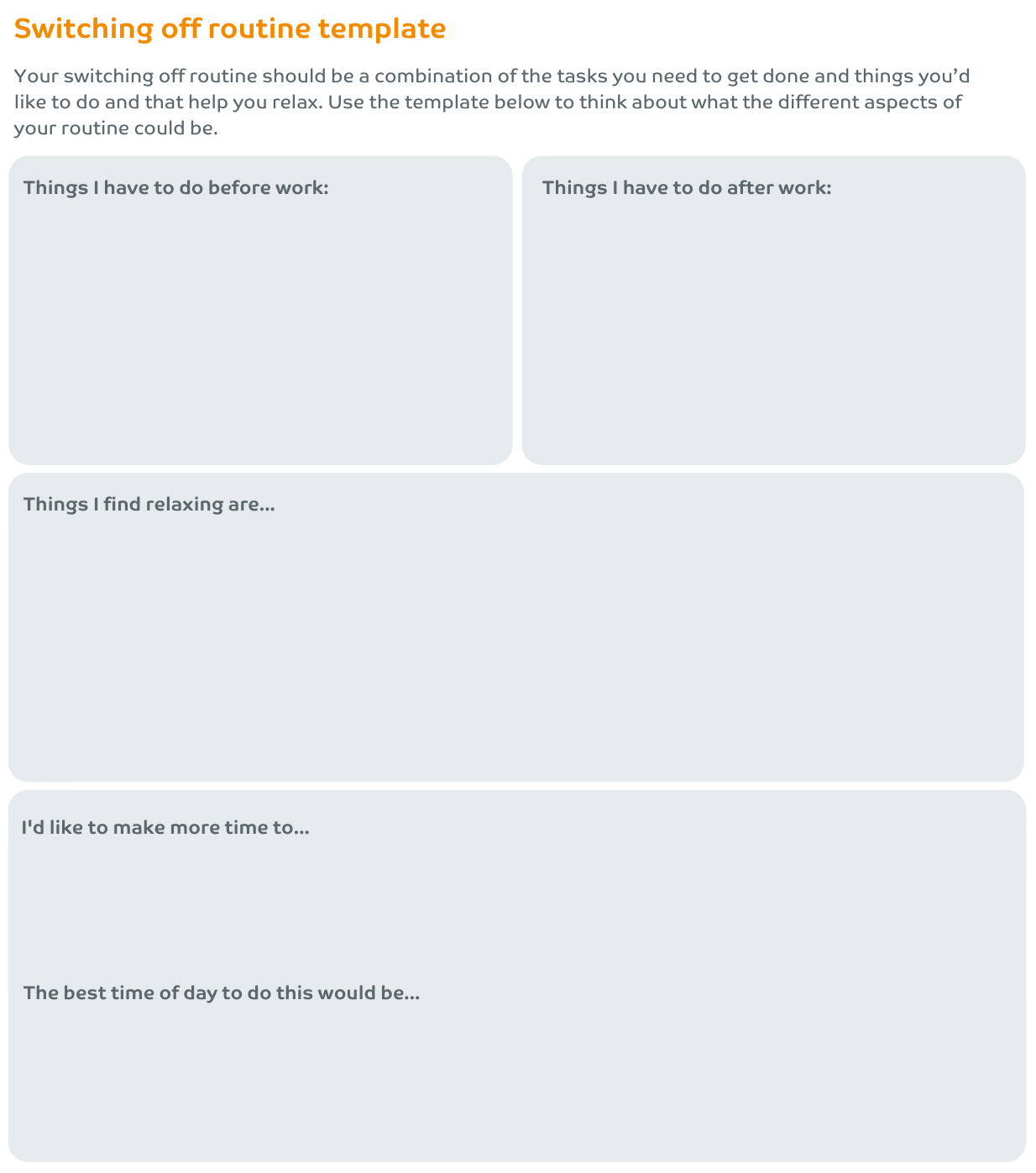Whether you’re a key worker still at your workplace or trying to stay productive whilst working from the kitchen table, the boundaries between work and home are more blurred than ever at the moment, making it hard to switch off.
One piece of research found that 76% of us are unable to immediately switch off from work, with it taking an average of 1 hour and 39 minutes to relax after leaving work.
Having enough time to switch off from work is key to our mental and physical health – it gives our mind and body time to unwind and relax.
Take a look at our top tips for switching off below and have a go at creating your own routine using the template.
Process the day
It can be really hard to let go of something and put it behind you if you haven’t had enough time to acknowledge it and take some time to reflect on it.
At the end of your work shift, put aside a small amount of time to process what happened that day.
How you do this will vary from person to person; some people may write about something that’s upset them or made them angry, others may talk to a friend or partner. For some people, writing their to-do list for the next day can stop thoughts about work running round their head.
Create a routine
From limits on how often we can go out to seeing friends and family, many aspects of our normal routines have changed since the start of the COVID-19 outbreak.
Faced with all this change, it can be easy for the boundaries between work and home to become blurred and for our stress levels to rise.
To help you make time for self-care, think about creating some ‘book ends’ for your day – morning and evening routines to help you reduce stress.
These routine ‘book ends’ could include practical things, such as preparing your lunch for the next day, as well as activities that help you unwind and destress.
Signals such as taking a shower or changing your clothes when you get home from work can help reinforce that the work day is over.
Creating a routine and sticking to it will help signal to your body and mind that it’s time to relax, making it easier to switch off.
